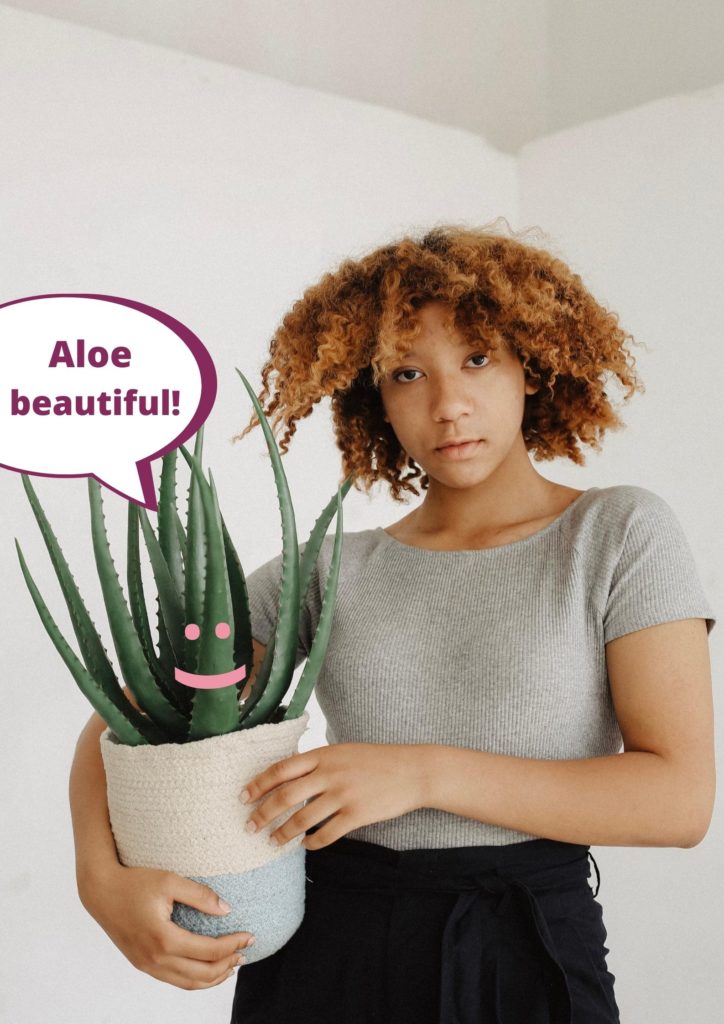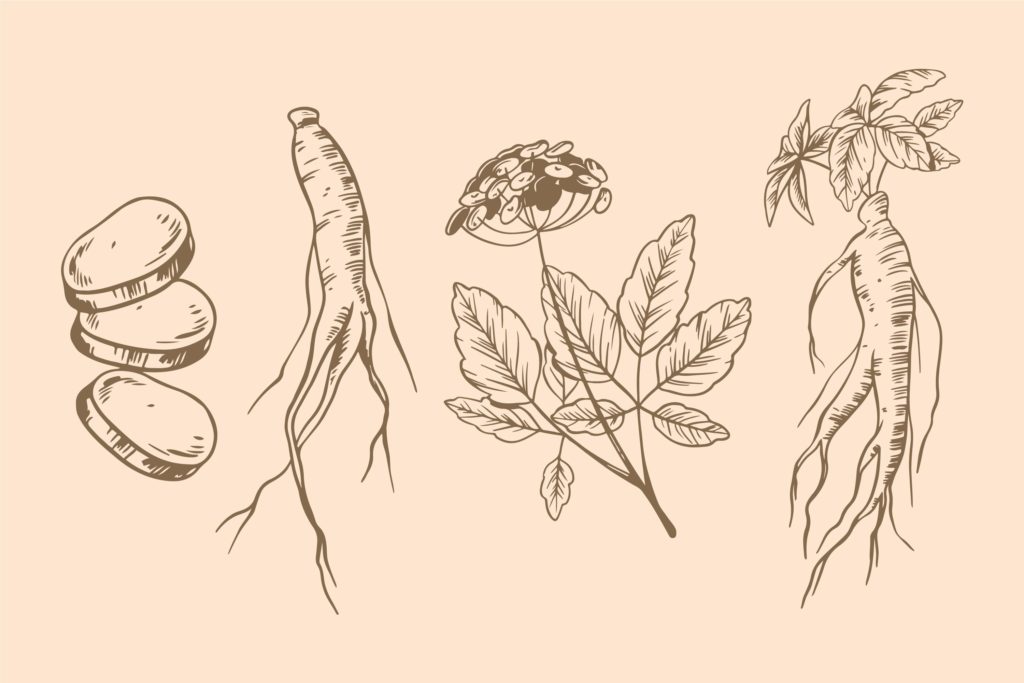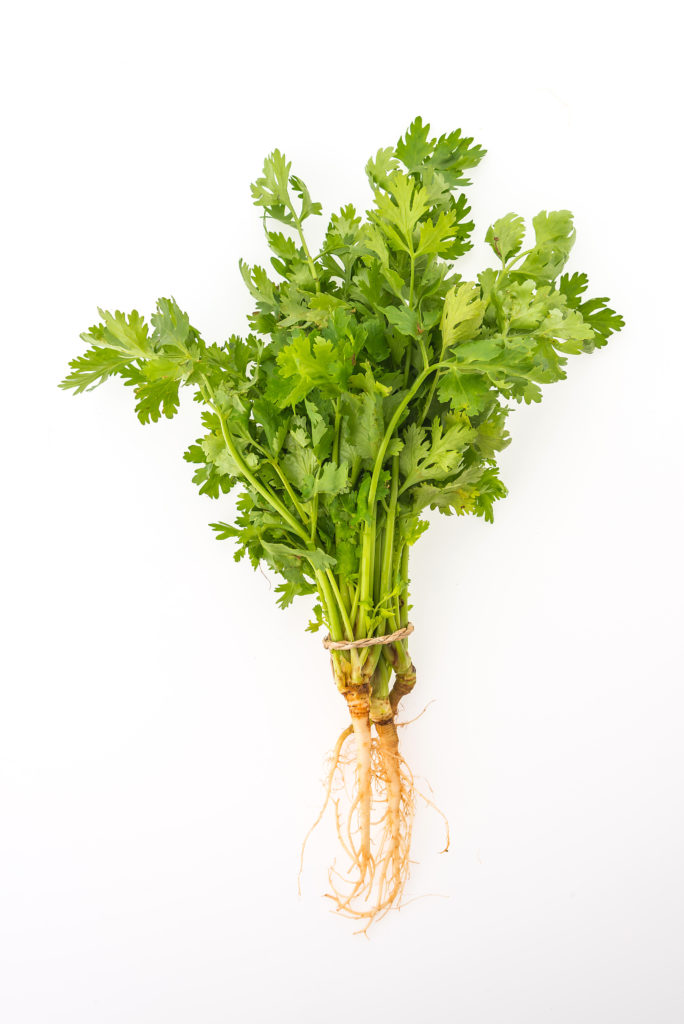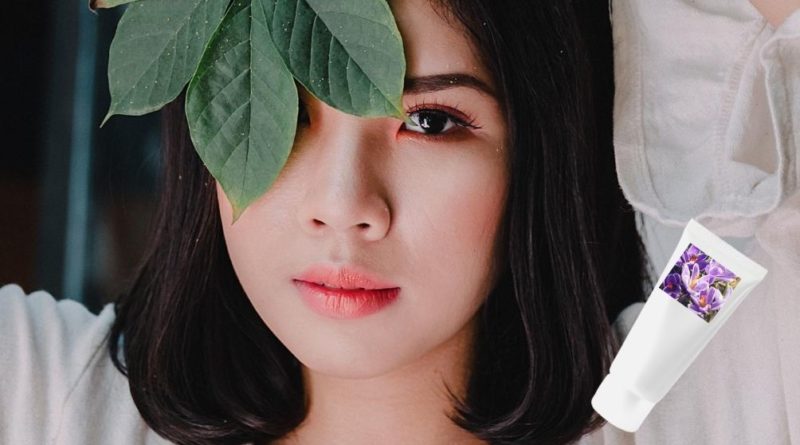7 Potential Botanicals to Slow Down Skin Ageing – Collagen Care
The desire to replenish collagen levels and thereby slow down skin ageing has spawned the development of beauty products containing a diverse variety of ingredients. We’ve already examined the evidence supporting the use of collagen hydrolysate, vitamins C, E and B3, retinoids, and phytoestrogens. Beyond these, there are numerous botanicals which have been added to skincare products or recommended for consumption. These have the appeal of being natural… but, as the research we have shows, this does not necessarily mean they can be relied upon as safe and effective.
Key Points:
- Aloe vera may increase collagen synthesis and prevent breakdown thanks to its sterol content. However, evidence is not unanimously favourable. There are also potential risks- which may vary with the type of aloe vera product used- including toxicity and carcinogenesis.
- Consumption of ginseng root, or topical application of products containing extracts, may also boost skin collagen levels. However, there have been suggestions of possible risks that are yet to be studied.
- The beauty industry uses many other botanicals in their supposed pro-collagen products. Just a few of these are coriander, chlorophyll, crocin, rosa damascena and crocin. While the results from studies addressing their impact may be encouraging, they would not stand up as adequate proof.
1. Aloe vera and collagen: relatively well researched, equivocal results
The cooling sensation of aloe vera gel is welcomed on many a sunburnt skin. Turns out, that may not be the only benefit to skin. Aloe vera is also claimed to be anti-inflammatory, healing, moisturising, antibacterial, antifungal and antiviral… and, of course the benefit you’re here for- fighting wrinkles and supporting collagen synthesis.

In a small study, 90 days of aloe vera supplementation saw increased collagen synthesis and reduced expression of a collagen-degrading enzyme (MMP) among women over 45 years of age. Interestingly, the low dose (1,200 mg/day) appeared as effective as the high dose (3,600 mg/day) of supplementation. There was also a reduction of wrinkles, which is a bit of a subjective assessment, but it was made as objectively as possible by using a Visiometer device that converts skin roughness to numerical values. Aloe vera gel has also been seen to avert some of the degradation of collagen expected to result from oestrogen deficiency in mice whose ovaries were removed.
Other studies have produced less promising results. However, there are factors that may impact on the effect of aloe vera, and complicate comparisons between studies. For example, changes may occur to the gel after it is removed from the leaf, so any variation in handling and storage may account for different effects. It should also be noted that there can be significant variations in the composition and function of any given species of plant, depending on growing conditions (eg: soil, water, sun). To resolve this, large studies which apply stringent standards and controls would be required.
How might aloe vera boost collagen?
Like all plants, aloe vera is full of biologically active components, including complex carbohydrates, amino acids, oils, plant sterols, tannins, enzymes, vitamins and minerals. It is thought that sterols (cycloartenol and lophenol) likely have a large role in any pro-collagen effects. They have been seen to increase collagen synthesis in fibroblast cell cultures, increase the expression of collagen-producing genes within fibroblasts, and visibly reduce wrinkles among Japanese women over age 40.
As in most areas of cosmetics, there are limitations in the strength of clinical evidence available. Among the better studies was a small randomised controlled trial from 2016, where 64 women, aged 30-59 years either received a yoghurt fortified with 40 μg aloe sterols, or just a placebo yoghurt, each day for 8 weeks. Ultrasound analysis of forearms showed increased collagen content among those who ingested sterols. The depth of facial wrinkles also reduced. A 2020 study by the same research team showed that even 19 μg sterols per day was able to increase collagen content. This suggests that sterols have a potent effect, which is promising. Of course, large, quality studies are required to increase the credibility of small studies. In addition, a study of rats suggests that aloe vera sterols that are consumed do reach the skin, but we have not confirmed this among humans.
Risks of aloe vera use

Aloe vera is often embraced as a natural, gentle ingredient. However, the reality is that it comes with potential side effects, particularly in cases where whole leaf extract, peel or latex is used. There has been clear evidence that whole leaf extract can be a carcinogen in rats. Cell culture and other animal studies also show it may promote genetic mutations. In the absence of sufficient research exploring the question among humans, it has been classified as a possible carcinogen for us too.
There have also been several reports of individuals experiencing toxicity or hypersensitivity (eg: cases of toxic hepatitis). Unfortunately we do not have any more robust data from controlled toxicology trials on the issue.
Either consuming or applying aloe vera topically also has potential for a range of milder side effects. These include skin irritation, hives, cramping, and diarrhoea- particularly among people who are allergic to other plants in the lily family, such as onions, tulips.
Aloe vera gel is connected to reports or adverse events such as severe dermatitis and rash, while some toxicity has been seen amongst animals. But from controlled human studies it appears that it may be milder than whole leaf extracts, peel or latex. It is thought that this is because whole leaf, peel and latex are comparatively concentrated sources of compounds known as anthraquinones, which have been associated with toxicity to cells, mutations and tumour development. The presence of aromatic compounds, such as aldehydes and ketones may also have a negative impact.
When anthraquinones are exposed to UVA light, they generate reactive oxygen species- which can do oxidative damage not only to collagen but anything else in its path. In a lab, UV exposure of whole leaf extracts caused oxidation of a fatty acid it was paired with. Thus use of whole leaf extract in topical products could actually make your skin more sensitive to UV damage.Risk is increased when anthraquinone consumption is high over the long term. The International Aloe Science Council recommends you should ingest less than 10 parts per million of aloin (a key anthraquinone) in aloe vera products for medical purposes. But when your purposes are nonmedical (eg: cosmetic) it should be limited to 50ppm.
2. Ginseng and collagen enhancement
There are different varieties of ginseng, including Panax ginseng (or Asian or Korean ginseng) and Panax quinquefolius (American ginseng). Panax ginseng is the most studied with respect to the effect on collagen, and otherwise.
There is a lack of proof from high-quality human studies. However, in the lab, a root extract of Panax ginseng, C.A. Meyer was seen to increase type 1 collagen and procollagen synthesis, and to activate an associated gene. Sun ginseng (i.e. steamed Panax ginseng) may be more therapeutically effective than raw ginseng. Nonetheless, as well as directly stimulating collagen synthesis and inhibiting MMP’s, it has been seen to help fibroblasts multiply within cell culture. More fibroblasts would mean more collagen-producing capacity.

Ginsenosides are thought to give ginseng some of its collagen-enhancing effects. They and their metabolites downregulate collagen-degrading MMP’s in fibroblast cell cultures exposed to UVB irradiation, and increase type 1 procollagen synthesis. Topical application of an enzyme-modified ginseng extract, which was rich in a ginsenoside (F2t), also reduced the fragmentation of collagen in mice, thereby preventing a loss of structural integrity of their skin.
There is also gintonin, a recently discovered component of ginseng. A 2019 paper indicated that it may stimulate fibroblasts to release more collagen.
The risks of ginseng are but poorly studied. It is generally considered to be safe, and any side effects to be minor. Topical application of Panax ginseng root extract didn’t seem to produce any adverse skin reactions in a primary irritation test. However, there have been medical reports of ginseng consumption causing high blood pressure, diarrhoea, restlessness, breast soreness and vaginal bleeding. We really need quality controlled trials to indicate whether such events result from ginseng use, were based on other associations, or if the reports were aberrations. If ginseng does pose risks, we need further research to identify in which situations, and what quantities, it is most safe.
There are many other botanicals that have only been minimally investigated, but which may have an impact on collagen. If only we had more research to prove one way or another! For interest sake, here are just a few of them… If you’d like to know more about a specific plant or ingredient used in skincare, feel free to leave us a comment.
3. Coriander for collagen?

Coriander may be a divisive herb when used around the dinner table, but there is as yet no room for division in the science: I only came across one study from 2014 which directly examined the effect of coriander on collagen. When an extract of coriander was delivered to a cell culture of normal fibroblasts after being subjected to UVB irradiation, it increased the synthesis of type 1 procollagen and inhibited a collagen-degrading MMP. These findings were mirrored amongst mice treated with coriander extract. Furthermore, the collagen fibres of these mice were denser, indicative of greater structural integrity.
4. Chlorophyll for collagen?

90 days of chlorophyll extract supplementation has been seen to increase type 1 procollagen and collagen synthesis amongst females over 45. There are also indications that it may impede UVB rays’ ability to activate collagen-degrading MMP’s.
5. Crocin for collagen?

Crocin is found within saffron (it provides the vibrant red hue) and a gardenia by the technical name Gardenia jasminoides Ellis. Crocin has a great antioxidant capacity- even better than that of vitamin C! In a fibroblast cell culture study, crocin reduced oxidation resulting from UV exposure and increased collagen synthesis. Unfortunately it is also highly unstable i.e. degrades quickly. If topical applications are to have any success, manufacturers will need to find a way to stabilise it (for example, with nanostructured lipids).
6. Rosa Damascena for collagen?

A small study showed that consumption of rosa damascena reduced MMP activation and curtailed a loss of procollagen amongst UV-B exposed mice. It appears extracts from petals have greater antioxidant capacity and ability to inhibit MMP’s than extracts from receptacles (the part that connects petals to the stem). What active component/s of rosa damascena extracts- phenolics, flavonoids, alkaloids, tannins, terpenes, triterpenoids, and steroids- are responsible for any such effects have not been adequately investigated. Neither has how they may work.
| FYI: Rosa damascena is otherwise known as Damask Rose, and is the traditional source of rose water… although nowadays rose water can actually be distilled from any rose. |
7. Last but not least… Royal Jelly

Royal jelly is produced by honeybees. It is full of proteins, carbohydrates, fats, free amino acids, vitamins, and minerals. The majority of its fats are medium-chain fatty acids. A notable example is the unsaturated 10-hydroxy-2-decenoic acid (10-HDA), which may have antitumor and antibacterial activity, as well as a capacity to stimulate collagen production. In cell cultures, it has been seen to stimulate fibroblasts and produce transforming growth factor (TGF) β1, a cytokine that induces collagen synthesis. Controlled human trials are not available to support or refute this. Another fatty acid, 10-hydroxydecanoic acid has also been seen to increase collagen production. It appears the response is dose-dependent.
The Verdict
Many botanicals are included in skincare products. While there is some appeal of using natural plant products, the majority of these have very minimal evidence for them, particularly when it comes to collagen boosting properties. This research is not enough to base recommendations on, but it does show where further investigation would be warranted. Because aloe vera and ginseng root are relatively well researched, we naturally have more evidence in support of their effect. However, there is good reason to be wary of potentially serious side effects of aloe vera use, and there may be risks associated with ginseng that we are not fully informed about. As a precaution, you should use skincare or edible products containing either only sparingly, and aloe vera products should be derived from gel and contain less than 50ppm of the anthraquinone known as aloin.
Is there a natural skincare product you swear by? Let us know about it below!
References
Campa, M., and Baron, E. (2018). Anti-aging Effects of Select Botanicals: Scientific Evidence and Current Trends. Cosmetics. 5(3), 54. MDPI AG. http://dx.doi.org/10.3390/cosmetics5030054
Cho, S., Lee, S., Lee, M.J. et al. (2009). Dietary Aloe Vera Supplementation Improves Facial Wrinkles and Elasticity and It Increases the Type I Procollagen Gene Expression in Human Skin in vivo. Ann Dermatol. 21(1):6-11. https://doi.org/10.5021/ad.2009.21.1.6
El Fitriani, E., Raif, A., Ginting, C.N., and Ikhtiari, R. (2020) Evaluation of antioxidant and anti-collagenase activity of Rosa damascena L. flower petal and receptacle extract [version 1; peer review: awaiting peer review]. F1000Research. 9:716. https://doi.org/10.12688/f1000research.24772.1
Guo, X., & Mei, N. (2016). Aloe vera: A review of toxicity and adverse clinical effects. Journal of environmental science and health. Part C, Environmental carcinogenesis & ecotoxicology reviews, 34(2): 77–96. https://doi.org/10.1080/10590501.2016.1166826
Hooda. R. (2015). Antiwrinkle herbal drugs – An update. Journal of Pharmacognosy and Phytochemistry. 4(4): 277-281
Hwang, E., Lee, D.G., Park, S.H., Oh, M.S., and Kim, S.Y. (2014). Coriander Leaf Extract Exerts Antioxidant Activity and Protects Against UVB-Induced Photoaging of Skin by Regulation of Procollagen Type I and MMP-1 Expression. Journal of Medicinal Food. 17(9):985-995. doi: 10.1089/jmf.2013.2999
Hwang, E., Lee, T. H., Park, S. Y., Yi, T. H., & Kim, S. Y. (2014). Enzyme-modified Panax ginseng inhibits UVB-induced skin aging through the regulation of procollagen type I and MMP-1 expression. Food & function, 5(2), 265–274. https://doi.org/10.1039/c3fo60418g
Kaminaka, C., Yamamoto, Y., Sakata, M. et al. (2020), Effects of low‐dose Aloe sterol supplementation on skin moisture, collagen score and objective or subjective symptoms: 12‐week, double‐blind, randomized controlled trial. J Dermatol. doi:10.1111/1346-8138.15428
Koya-Miyata, S., Okamoto, I., Ushio, S., Iwaki, K., Ikeda, M., and Kurimoto, M. (2004). Identification of a Collagen Production-promoting Factor from an Extract of Royal Jelly and Its Possible Mechanism. Bioscience, Biotechnology, and Biochemistry. 68(4): 767-773. https://doi.org/10.1271/bbb.68.767
Lee, H., Kim, J., Park, J.Y., Kang, K.S., Park, J.H., and Hwang, G.S. (2017). Processed Panax ginseng, sun ginseng, inhibits the differentiation and proliferation of 3T3-L1 preadipocytes and fat accumulation in Caenorhabditis elegans. Journal of Ginseng Research. 41(3):257-267. https://doi.org/10.1016/j.jgr.2016.04.004.
Lee, J., Jung, E., Lee, J. et al. (2007). Panax ginseng induces human Type I collagen synthesis through activation of Smad signaling. Journal of ethnopharmacology. 109:29-34. DOI:10.1016/j.jep.2006.06.008.
Lee, R., Lee, NE., Hwang, H., Rhim, H., Cho, I.H., and Nah, S.Y. (2019). Ginseng Gintonin Enhances Hyaluronic Acid and Collagen Release from Human Dermal Fibroblasts Through Lysophosphatidic Acid Receptor Interaction. Molecules. 24:4438. doi: 10.3390/molecules24244438
Nocerino, E., Amato, M., and Izzo, A.A. (2000) The aphrodisiac and adaptogenic properties of ginseng. Fitoterapia. 71(S1):S1-S5. https://doi.org/10.1016/S0367-326X(00)00170-2.
Park, B., Hwang, E., Seo, S.A., Zhang, M., Park, S.Y., and Yi, T.H. (2017). Dietary Rosa damascena protects against UVB-induced skin aging by improving collagen synthesis via MMPs reduction through alterations of c-Jun and c-Fos and TGF-β1 stimulation mediated smad2/3 and smad7. Journal of Functional Foods, 36: 480-489. https://doi.org/10.1016/j.jff.2017.07.028.
Park, H.M., Hwang, E., Lee, K.G., Han, S.M., Cho, Y., and Kim, S.Y. (2011). Royal Jelly Protects Against Ultraviolet B–Induced Photoaging in Human Skin Fibroblasts via Enhancing Collagen Production. Journal of Medicinal Food. 14(9): https://doi.org/10.1089/jmf.2010.1363
Song, K. C., Chang, T. S., Lee, H., Kim, J., Park, J. H., & Hwang, G. S. (2012). Processed Panax ginseng, Sun Ginseng Increases Type I Collagen by Regulating MMP-1 and TIMP-1 Expression in Human Dermal Fibroblasts. Journal of ginseng research, 36(1), 61–67. https://doi.org/10.5142/jgr.2012.36.1.61
Tanaka, M., Misawa, E., Yamauchi, K., Abe, F., andIshizaki, C. (2015). Effects of plant sterols derived from Aloe vera gel on human dermal fibroblasts in vitro and on skin condition in Japanese women. Clinical, cosmetic and investigational dermatology. 8:95–104. https://doi.org/10.2147/CCID.S75441
Tanaka, M., Yamamoto, Y., Misawa, E. et al. (2016). Effects of Aloe Sterol Supplementation on Skin Elasticity, Hydration, and Collagen Score: A 12-Week Double-Blind, Randomized, Controlled Trial. Skin Pharmacol Physiol. 29:309-317. doi: 10.1159/000454718
Xia, Q., Yin, J.J., Fu, P. P., & Boudreau, M. D. (2007). Photo-irradiation of Aloe vera by UVA–formation of free radicals, singlet oxygen, superoxide, and induction of lipid peroxidation. Toxicology letters, 168(2):165–175. https://doi.org/10.1016/j.toxlet.2006.11.015
